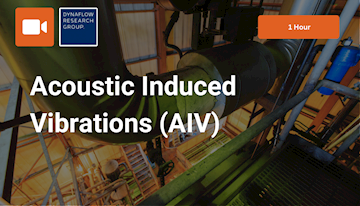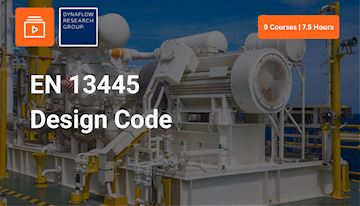Self-Paced
-
Practical Guide to Plant LayoutBy: Mike Lureman
-
Fatigue Analysis - Nominal StressesBy: Johannes Homan
-
Acoustic Induced Vibrations (AIV)By: Dynaflow Research Group
-
Components in a Piping AnalysisBy: Dynaflow Research Group
-
OT Cybersecurity Awareness TrainingBy: Ted Angevaare
-
Basics of Pipe Stress according to ASME B31.3 and EN 13480By: Dynaflow Research Group
-
Understanding Water Hammer Part IBy: Dynaflow Research Group
-
How to Review a Pulsation StudyBy: Dynaflow Research Group
-
Design and Analysis of FRP piping systems according to ISO 14692By: Dynaflow Research Group
-
BOSpulse Foundations: Pulsation AnalysisBy: Dynaflow Research Group
-
Pipe Supporting: a Practical GuideBy: Mike Lureman
-
Dynamic Pipe stress: Examples and Methods ComparisonBy: Dynaflow Research Group
-
EN 13480: Fatigue considerationsBy: Dynaflow Research Group
-
PED 2014/68/EU: Documentation and CE MarkingBy: Geert Peeks
-
Code Conformance for FRP piping: ISO 14692By: Dynaflow Research Group
-
Flow Induced Vibrations (FIV)By: Dynaflow Research Group
-
EN 13480: Openings and NozzlesBy: Dynaflow Research Group
-
Dynamic Pipe Stress: Modal, Harmonic, Spectrum and Time HistoryBy: Dynaflow Research Group
-
Actuated Valves: RequisitioningBy: Frans Martens
-
Additional Features in BOSfluidsBy: Dynaflow Research Group






















